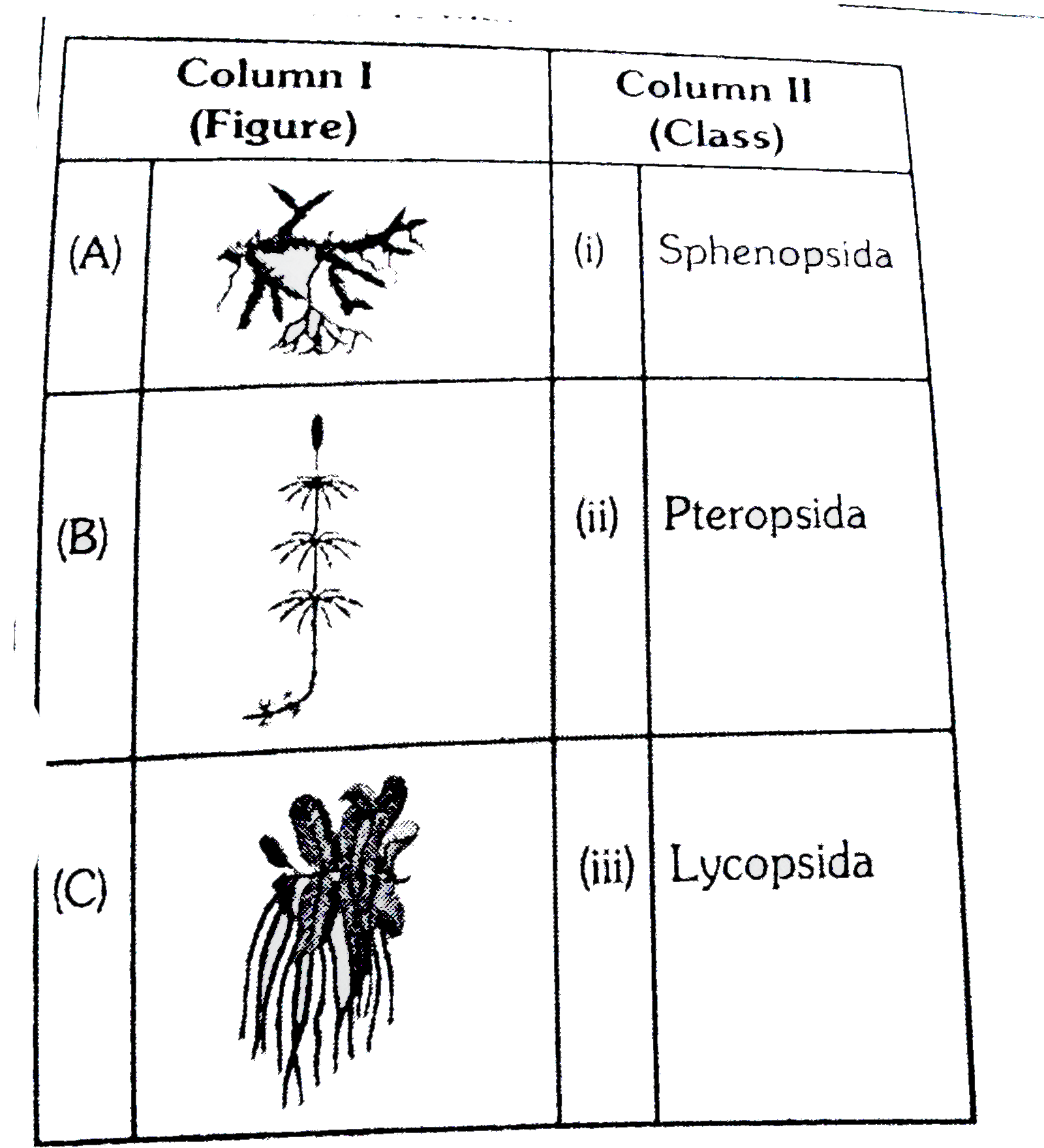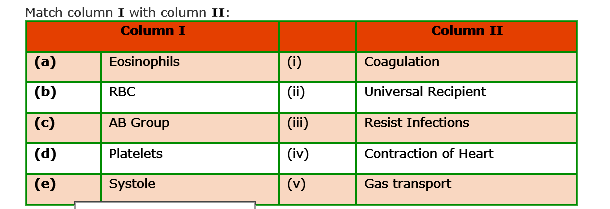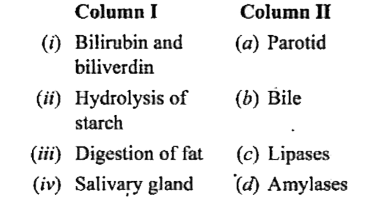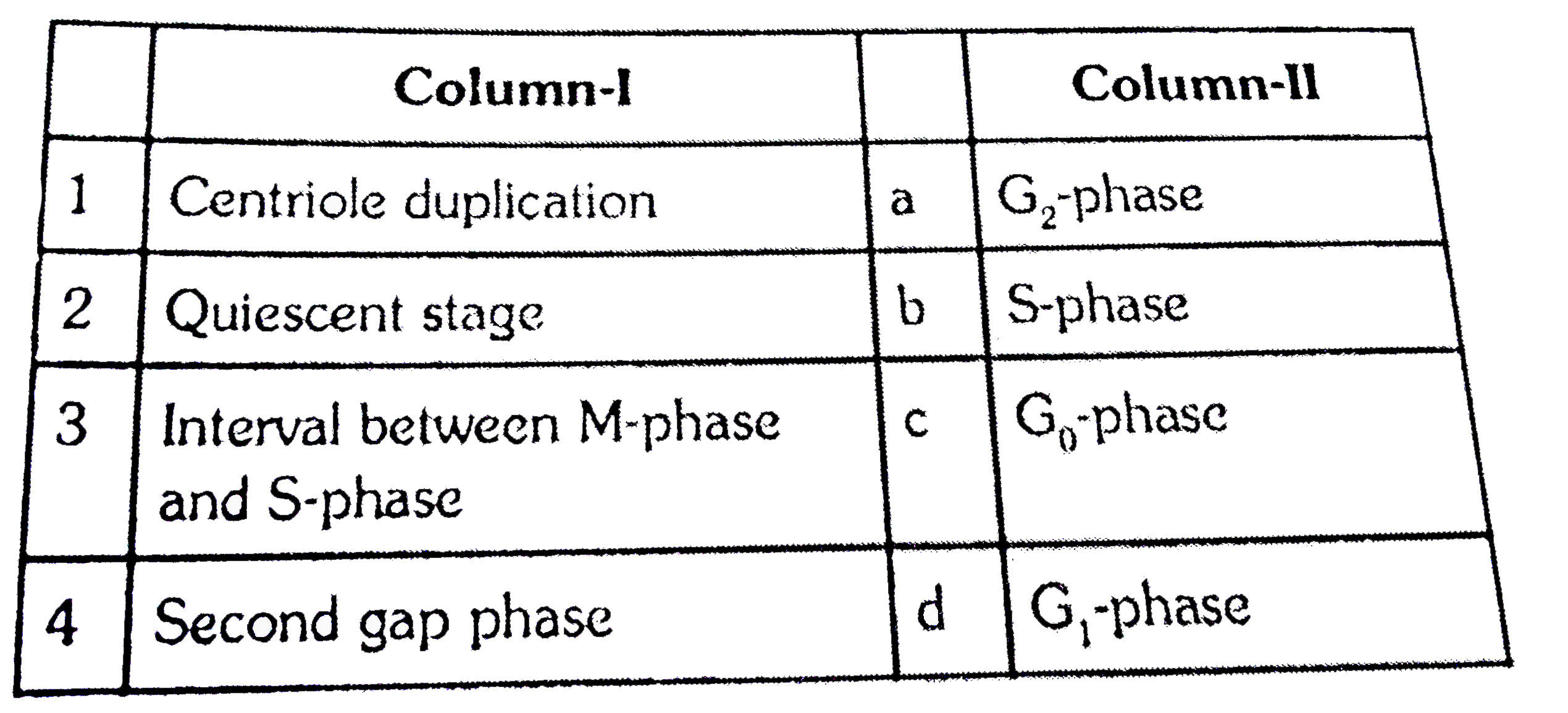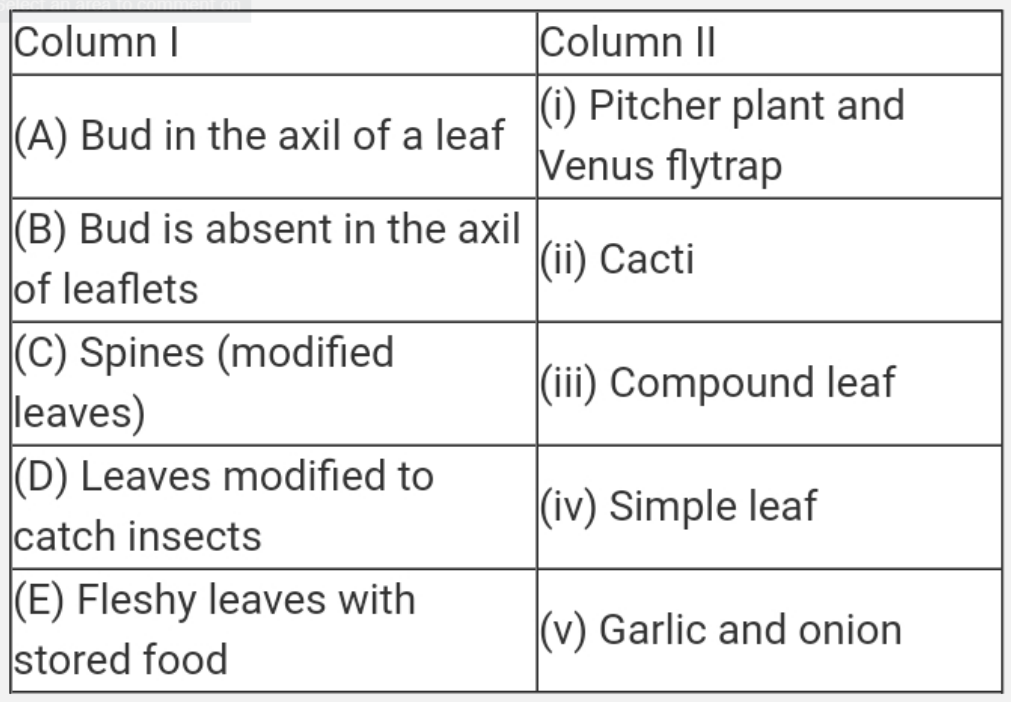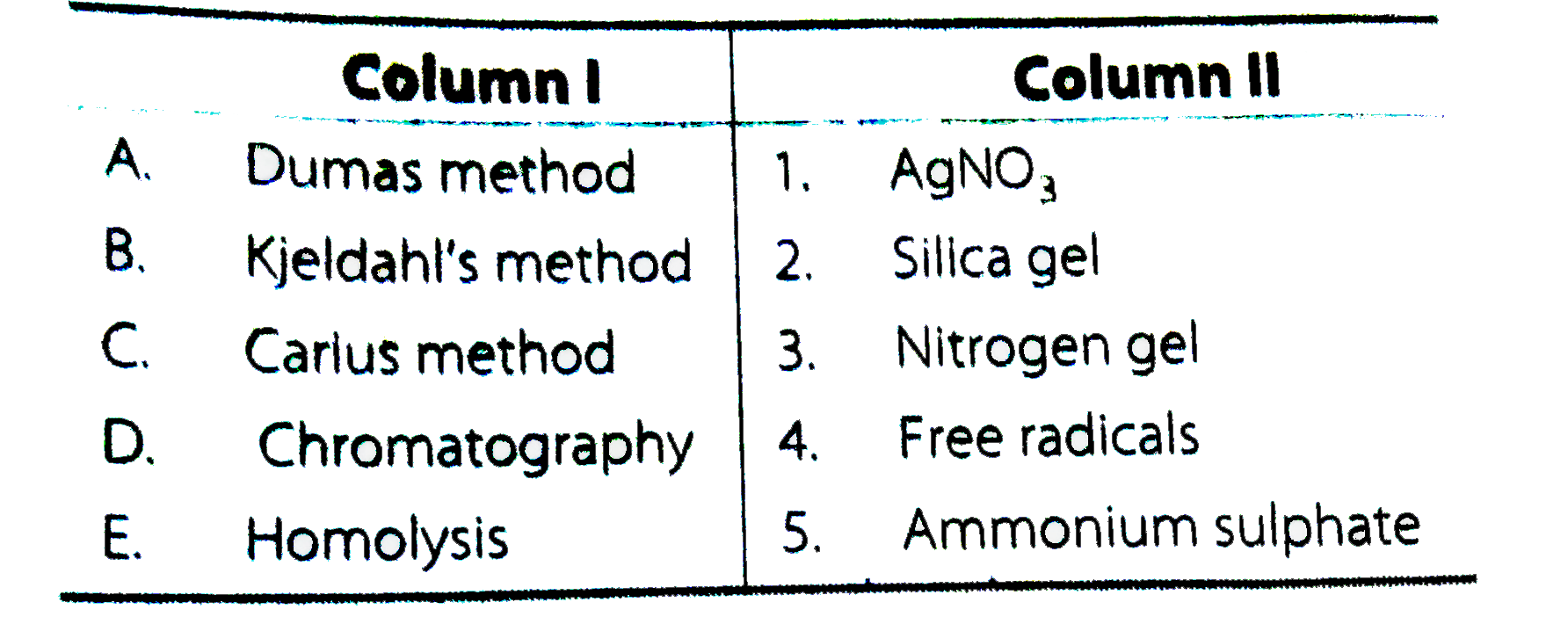Match the column I with Column II:-
Column IColumn II(A) Unicellular(i) Spirogyra(B) Colonial(ii) Kelps(C) Filamentous(iii) Volvox(D) massive plant bodies(iv) Chlamydomonas
The correct Answer is:A-iv,B-iii,C-I,D-ii
To solve the matching question, we need to pair the items from Column I with the appropriate items from Column II based on their characteristics. Let's analyze each item step by step.
Step 1: Identify the characteristics of each item in Column I
1. Unicellular: This refers to organisms that consist of a single cell.
2. Colonial: This refers to organisms that live in groups or colonies, consisting of multiple cells that may be connected.
3. Filamentous: This refers to organisms that have a thread-like structure, often forming long chains or filaments.
4. Massive plant bodies: This refers to large organisms that form substantial structures, typically seen in larger algae or plants.
Step 2: Analyze Column II options
1. Spirogyra: This is a type of filamentous green algae.
2. Kelps: These are large brown algae that form massive plant bodies in marine environments.
3. Volvox: This is a colonial green algae that forms spherical colonies.
4. Chlamydomonas: This is a unicellular green algae.
Step 3: Match the items
- A (Unicellular): The correct match is (iv) Chlamydomonas because it is a unicellular organism.
- B (Colonial): The correct match is (iii) Volvox because it forms colonies.
- C (Filamentous): The correct match is (i) Spirogyra because it is filamentous in structure.
- D (Massive plant bodies): The correct match is (ii) Kelps because they are large brown algae that form massive structures.
Final Matches
- A → (iv) Chlamydomonas
- B → (iii) Volvox
- C → (i) Spirogyra
- D → (ii) Kelps
Summary of Matches
- A (Unicellular) → (iv) Chlamydomonas
- B (Colonial) → (iii) Volvox
- C (Filamentous) → (i) Spirogyra
- D (Massive plant bodies) → (ii) Kelps
---
2. Colonial: This refers to organisms that live in groups or colonies, consisting of multiple cells that may be connected.
3. Filamentous: This refers to organisms that have a thread-like structure, often forming long chains or filaments.
4. Massive plant bodies: This refers to large organisms that form substantial structures, typically seen in larger algae or plants.
2. Kelps: These are large brown algae that form massive plant bodies in marine environments.
3. Volvox: This is a colonial green algae that forms spherical colonies.
4. Chlamydomonas: This is a unicellular green algae.
- B (Colonial): The correct match is (iii) Volvox because it forms colonies.
- C (Filamentous): The correct match is (i) Spirogyra because it is filamentous in structure.
- D (Massive plant bodies): The correct match is (ii) Kelps because they are large brown algae that form massive structures.
- B → (iii) Volvox
- C → (i) Spirogyra
- D → (ii) Kelps
- B (Colonial) → (iii) Volvox
- C (Filamentous) → (i) Spirogyra
- D (Massive plant bodies) → (ii) Kelps
Topper's Solved these Questions
Similar Questions
Knowledge Check
Match the Column I and Column II:
 A1. i. 2. ii 3. iii 4. ivB1. i 2. ii 3. iii 4. ivC1. i2. ii 3. iii 4. ivD1. i 2. ii 3. iii 4. iv
A1. i. 2. ii 3. iii 4. ivB1. i 2. ii 3. iii 4. ivC1. i2. ii 3. iii 4. ivD1. i 2. ii 3. iii 4. ivMatch the Column I and Column II:
 A1. i 2. ii 3. iii 4. ivB1. i 2. ii 3. iii 4. ivC1. i 2. ii 3. iii 4. ivD1. i 2. ii 3. iii 4. iv
A1. i 2. ii 3. iii 4. ivB1. i 2. ii 3. iii 4. ivC1. i 2. ii 3. iii 4. ivD1. i 2. ii 3. iii 4. iv

